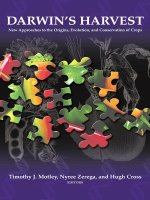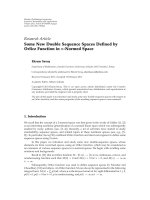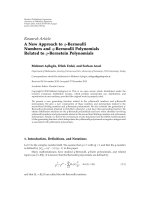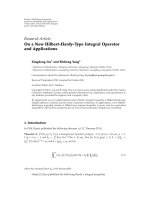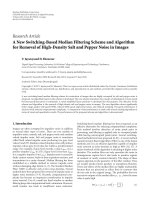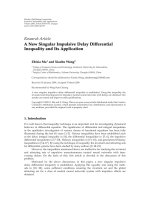- Trang chủ >>
- Khoa Học Tự Nhiên >>
- Vật lý
Explorers of new lands juan ponce de leon and his lands of discovery
Bạn đang xem bản rút gọn của tài liệu. Xem và tải ngay bản đầy đủ của tài liệu tại đây (4.74 MB, 161 trang )
Explorers of New Lands
Juan Ponce de León
and His Lands of Discovery
Explorers of New Lands
Christopher Columbus
and the Discovery of the Americas
Hernándo Cortés
and the Fall of the Aztecs
Francis Drake
and the Oceans of the World
Francisco Coronado
and the Seven Cities of Gold
Ferdinand Magellan
and the Quest to Circle the Globe
Hernando de Soto
and His Expeditions Across the Americas
Francisco Pizarro
and the Conquest of the Inca
Marco Polo
and the Realm of Kublai Khan
Juan Ponce de León
and His Lands of Discovery
Vasco da Gama
and the Sea Route to India
Explorers of New Lands
Juan Ponce de León
and His Lands of Discovery
John C. Davenport
Series Consulting Editor William H. Goetzmann
Jack S. Blanton, Sr. Chair in History and American Studies
University of Texas, Austin
CHELSEA HOUSE PUBLISHERS
VP, N EW P RODUCT DEVELOPMENT Sally Cheney
DIRECTOR OF P RODUCTION Kim Shinners
CREATIVE MANAGER Takeshi Takahashi
MANUFACTURING MANAGER Diann Grasse
Staff for JUAN PONCE DE LEÓN
EXECUTIVE E DITOR Lee Marcott
E DITORIAL ASSISTANT Carla Greenberg
P RODUCTION E DITOR Noelle Nardone
P HOTO E DITOR Sarah Bloom
COVER AND I NTERIOR DESIGNER Keith Trego
LAYOUT 21st Century Publishing and Communications, Inc.
© 2006 by Chelsea House Publishers,
a subsidiary of Haights Cross Communications.
All rights reserved. Printed and bound in the United States of America.
www.chelseahouse.com
First Printing
987654321
ISBN 0-7910-8607-0
Library of Congress Cataloging-in-Publication Data
Davenport, John.
Juan Ponce de León and his lands of discovery / John Davenport.
p. cm. — (Explorers of new lands)
Includes bibliographical references and index.
ISBN 0-7910-8607-0 (hardcover)
1. Ponce de León, Juan, 1460?-1521—Juvenile literature. 2. Explorers—America—Biography—
Juvenile literature. 3. Explorers—Spain—Biography—Juvenile literature. 4. America—Discovery
and exploration—Spanish—Juvenile literature. I. Title. II. Series.
E125.P7D27 2005
972.9’02’092—dc22
2005007529
All links and web addresses were checked and verified to be correct at the time of publication.
Because of the dynamic nature of the web, some addresses and links may have changed since
publication and may no longer be valid.
Table
1
2
3
4
5
6
7
8
of
Contents
Introduction by William H. Goetzmann
vi
1493
1
A New Spain and a New World
14
A Young Adventurer
36
A New Life in a New Land
54
Finding Florida
72
Building on Success
86
Florida and the Price of Ambition
102
Ponce de León, the New World,
and History
115
Chronology and Timeline
128
Notes
131
Bibliography
133
Further Reading
134
Index
135
Introduction
by William H. Goetzmann
Jack S. Blanton, Sr. Chair in History and American Studies
University of Texas, Austin
E
xplorers have always been adventurers. They
were, and still are, people of vision and most of
all, people of curiosity. The English poet Rudyard
Kipling once described the psychology behind the
explorer’s curiosity:
vi
INTRODUCTION
“Something hidden. Go and find it. Go and
look behind the Ranges—
Something lost behind the Ranges. Lost and
waiting for you. Go!” 1
Miguel de Cervantes, the heroic author of Don
Quixote, longed to be an explorer-conquistador. So
he wrote a personal letter to King Phillip II of
Spain asking to be appointed to lead an expedition
to the New World. Phillip II turned down his
request. Later, while in prison, Cervantes gained
revenge. He wrote the immortal story of Don
Quixote, a broken-down, half-crazy “Knight of La
Mancha” who “explored” Spain with his faithful
sidekick, Sancho Panza. His was perhaps the first
of a long line of revenge novels—a lampoon of the
real explorer-conquistadors.
Most of these explorer-conquistadors, such as
Columbus and Cortés, are often regarded as heroes
who discovered new worlds and empires. They
were courageous, brave and clever, but most of
them were also cruel to the native peoples they
met. For example, Cortés, with a small band of
500 Spanish conquistadors, wiped out the vast
vii
viii
INTRODUCTION
Aztec Empire. He insulted the Aztecs’ gods and
tore down their temples. A bit later, far down in South
America, Francisco Pizarro and Hernando de Soto
did the same to the Inca Empire, which was hidden
behind a vast upland desert among Peru’s towering
mountains. Both tasks seem to be impossible, but
these conquistadors not only overcame nature and
savage armies, they stole their gold and became
rich nobles. More astounding, they converted
whole countries and even a continent to Spanish
Catholicism. Cathedrals replaced blood-soaked
temples, and the people of South and Central
America, north to the Mexican border, soon spoke
only two languages—Portuguese in Brazil and
Spanish in the rest of the countries, even extending
through the Southwest United States.
Most of the cathedral building and language
changing has been attributed to the vast numbers of
Spanish and Portuguese missionaries, but trade with
and even enslavement of the natives must have
played a great part. Also playing an important part
were great missions that were half churches and half
farming and ranching communities. They offered
protection from enemies and a life of stability for
INTRODUCTION
the natives. Clearly vast numbers of natives took to
these missions. The missions vied with the cruel
native caciques, or rulers, for protection and for a
constant food supply. We have to ask ourselves: Did
the Spanish conquests raise the natives’ standard
of living? And did a religion of love appeal more to
the natives than ones of sheer terror, where hearts
were torn out and bodies were tossed down steep
temple stairways as sacrifices that were probably
eaten by dogs or other wild beasts? These questions
are something to think about as you read the
Explorers of New Lands series. They are profound
questions even today.
“New Lands” does not only refer to the Western
Hemisphere and the Spanish/Portuguese conquests
there. Our series should probably begin with the
fierce Vikings—Eric the Red, who discovered
Greenland in 982, and Leif Ericson, who discovered North America in 1002, followed, probably a
year later, by a settler named Bjorni. The Viking
sagas (or tales passed down through generations)
tell the stories of these men and of Fredis, the
first woman discoverer of a New Land. She became a savior of the Viking men when, wielding a
ix
x
INTRODUCTION
broadsword and screaming like a madwoman, she
single-handedly routed the native Beothuks who
were about to wipe out the earliest Viking settlement in North America that can be identified. The
Vikings did not, however, last as long in North
America as they did in Greenland and Northern
England. The natives of the north were far tougher
than the natives of the south and the Caribbean.
Far away, on virtually the other side of the
world, traders were making their way east toward
China. Persians and Arabs as well as Mongols
established a trade route to the Far East via such
fabled cities as Samarkand, Bukhara, and Kashgar
and across the Hindu Kush and Pamir Mountains
to Tibet and beyond. One of our volumes tells the
story of Marco Polo, who crossed from Byzantium
(later Constantinople) overland along the Silk Road
to China and the court of Kublai Khan, the Mongol
emperor. This was a crossing over wild deserts and
towering mountains, as long as Columbus’s Atlantic
crossing to the Caribbean. His journey came under
less dangerous (no pirates yet) and more comfortable conditions than that of the Polos, Nicolo and
Maffeo, who from 1260 to 1269 made their way
INTRODUCTION
across these endless wastes while making friends,
not enemies, of the fierce Mongols. In 1271, they
took along Marco Polo (who was Nicolo’s son and
Maffeo’s nephew). Marco became a great favorite
of Kublai Khan and stayed in China till 1292. He
even became the ruler of one of Kublai Khan’s
largest cities, Hangchow.
Before he returned, Marco Polo had learned
of many of the Chinese ports, and because of
Chinese trade to the west across the Indian
Ocean, he knew of East Africa as far as Zanzibar.
He also knew of the Spice Islands and Japan.
When he returned to his home city of Venice
he brought enviable new knowledge with him,
about gunpowder, paper and paper money, coal,
tea making, and the role of worms that create silk!
While captured by Genoese forces, he dictated
an account of his amazing adventures, which
included vast amounts of new information, not
only about China, but about the geography of
nearly half of the globe. This is one hallmark of
great explorers. How much did they contribute to
the world’s body of knowledge? These earlier
inquisitive explorers were important members
xi
xii
INTRODUCTION
of a culture of science that stemmed from world
trade and genuine curiosity. For the Polos crossing over deserts, mountains and very dangerous
tribal-dominated countries or regions, theirs was
a hard-won knowledge. As you read about Marco
Polo’s travels, try and count the many new things and
descriptions he brought to Mediterranean countries.
Besides the Polos, however, there were many
Islamic traders who traveled to China, like Ibn
Battuta, who came from Morocco in Northwest
Africa. An Italian Jewish rabbi-trader, Jacob
d’Ancona, made his way via India in 1270 to
the great Chinese trading port of Zaitun, where
he spent much of his time. Both of these
explorer-travelers left extensive reports of their
expeditions, which rivaled those of the Polos but
were less known, as are the neglected accounts
of Roman Catholic friars who entered China, one
of whom became bishop of Zaitun. 2
In 1453, the Turkish Empire cut off the Silk
Road to Asia. But Turkey was thwarted when, in
1497 and 1498, the Portuguese captain Vasco da
Gama sailed from Lisbon around the tip of Africa,
up to Arab-controlled Mozambique, and across the
INTRODUCTION
Indian Ocean to Calicut on the western coast of
India. He faced the hostility of Arab traders who
virtually dominated Calicut. He took care of this
problem on a second voyage in 1502 with 20 ships
to safeguard the interests of colonists brought to
India by another Portuguese captain, Pedro Álvares
Cabral. Da Gama laid siege to Calicut and
destroyed a fleet of 29 warships. He secured
Calicut for the Portuguese settlers and opened a
spice route to the islands of the Indies that made
Portugal and Spain rich. Spices were valued nearly
as much as gold since without refrigeration, foods
would spoil. The spices disguised this, and also
made the food taste good. Virtually every culture in
the world has some kind of stew. Almost all of them
depend on spices. Can you name some spices that
come from the faraway Spice Islands?
Of course most Americans have heard of
Christopher Columbus, who in 1492 sailed west
across the Atlantic for the Indies and China.
Instead, on four voyages, he reached Hispaniola
(now Haiti and the Dominican Republic), Cuba
and Jamaica. He created a vision of a New World,
populated by what he misleadingly called Indians.
xiii
xiv
INTRODUCTION
Conquistadors like the Italian sailing for Portugal,
Amerigo Vespucci, followed Columbus and in
1502 reached South America at what is now Brazil.
His landing there explains Brazil’s Portuguese
language origins as well as how America got its
name on Renaissance charts drawn on vellum or
dried sheepskin.
Meanwhile, the English heard of a Portuguese
discovery of marvelous fishing grounds off Labrador
(discovered by the Vikings and rediscovered by a
mysterious freelance Portuguese sailor named the
“Labrador”). They sent John Cabot in 1497 to
locate these fishing grounds. He found them, and
Newfoundland and Labrador as well. It marked
the British discovery of North America.
In this first series there are strange tales of other
explorers of new lands—Juan Ponce de León, who
sought riches and possibly a fountain of youth
(everlasting life) and died in Florida; Francisco
Coronado, whose men discovered the Grand
Canyon and at Zuñi established what became the
heart of the Spanish Southwest before the creation
of Santa Fe; and de Soto, who after helping to
conquer the Incas, boldly ravaged what is now the
INTRODUCTION
American South and Southeast. He also found that
the Indian Mound Builder cultures, centered in
Cahokia across the Mississippi from present-day
St. Louis, had no gold and did not welcome him.
Garcilaso de la Vega, the last Inca, lived to write
de Soto’s story, called The Florida of the Inca—a
revenge story to match that of Cervantes, who like
Garcilaso de la Vega ended up in the tiny Spanish
town of Burgos. The two writers never met. Why
was this—especially since Cervantes was the tax
collector? Perhaps this was when he was in prison
writing Don Quixote.
In 1513 Vasco Núñez de Balboa discovered the
Pacific Ocean “from a peak in Darien” 3 and was
soon beheaded by a rival conquistador. But perhaps
the greatest Pacific feat was Ferdinand Magellan’s
voyage around the world from 1519 to 1522, which
he did not survive.
Magellan was a Portuguese who sailed for
Spain down the Atlantic and through the Strait
of Magellan—a narrow passage to the Pacific. He
journeyed across that ocean to the Philippines,
where he was killed in a fight with the natives. As
a recent biography put it, he had “sailed over the
xv
xvi
INTRODUCTION
edge of the world.” 4 His men continued west, and
the Victoria, the last of his five ships, worn and
battered, reached Spain.
Sir Francis Drake, a privateer and lifelong enemy
of Spain, sailed for Queen Elizabeth of England on
a secret mission in 1577 to find a passage across the
Americas for England. Though he sailed, as he put
it, “along the backside of Nueva Espanola” 5 as far
north as Alaska perhaps, he found no such passage.
He then sailed west around the world to England.
He survived to help defeat the huge Spanish
Armada sent by Phillip II to take England in 1588.
Alas he could not give up his bad habit of privateering, and died of dysentery off Porto Bello,
Panama. Drake did not find what he was looking
for “beyond the ranges,” but it wasn’t his curiosity
that killed him. He may have been the greatest
explorer of them all!
While reading our series of great explorers, think
about the many questions that arise in your reading,
which I hope inspires you to great deeds.
INTRODUCTION
Notes
1. Rudyard Kipling, “The Explorer” (1898). See Jon Heurtl,
Rudyard Kipling: Selected Poems (New York: Barnes & Noble
Books, 2004), 7.
2. Jacob D’Ancona, David Shelbourne, translator, The City of
Light: The Hidden Journal of the Man Who Entered China Four
Years Before Marco Polo (New York: Citadel Press, 1997).
3. John Keats, “On First Looking Into Chapman’s Homer.”
4. Laurence Bergreen, Over the Edge of the World: Magellan’s
Terrifying Circumnavigation of the Globe (New York: William
Morrow & Company, 2003).
5. See Richard Hakluyt, Principal Navigations, Voyages, Traffiques
and Discoveries of the English Nation; section on Sir Francis
Drake.
xvii
1
1493
T
his fleet was larger than the first. There were only
three ships in that one—a large vessel known as a
carrack, and two smaller boats that the sailors called
caravels. Now, a year later, a total of 17 proud ships
crashed along with the westerly wind. Rolling this way
and that, the boats heaved through the waves. The men
1
2
JUAN PONCE DE LEÓN
in the fleet could look out over the sea and count
three carracks and 14 caravels. It was the largest
body of ships yet sent across the Atlantic Ocean. No
one had ever tried such a large undertaking. A few
craft now and again had pressed westward in the
past. Sometimes they were fishing boats. Sometimes
they were ships blown off course. Just a year before,
the expedition was a small one to trace out a new
trade route to Asia. Nothing to date had been all
that special. The ships this day, however, were an
awesome sight. And still, for all their majesty and
grace, out in the middle of the vast blue-green sea
the ships bobbed along like so many wooden corks.
They floated along on water that, as one observer
noted, gleamed brighter than “polished marble.” 1
A brilliant azure sky hung overhead, decorated
here and there with gentle white puffs of clouds. But
darker clouds along the horizon indicated that land
was not far off. One of the men on the ships recalled
observing “a considerable change in the sky and the
wind, with dark, threatening clouds ahead.” Such
signs convinced the fleet’s commander that “they
were close to land,” 2 as did the stiff breeze that
carried cackling seagulls over the ships. Seabirds on
1493
An expedition of Christopher Columbus’s leaves
the port of Palos in Spain. A young Juan Ponce
de León took part in Columbus’s second voyage
to the New World in 1493.
3
4
JUAN PONCE DE LEÓN
the wing were another good omen. The sailors knew
that birds grew more plentiful as land got closer. So,
they watched with relief as one gull after another
twisted and spun along behind the ships. Occasionally they came careering over the decks. The birds
seemed like angels, in a way. It was almost as if they
had come to the rescue of the men. The sailors had
been out to sea far longer than they had wanted.
Every beat of the gray and white wings echoed like
applause, like a happy greeting. Nature seemed to
be clapping for the sailors, welcoming them back to
dry land. Each man on the decks celebrated quietly
in his heart. He had made it. The ships had made it.
The fleet was there. The weary seafarers lifted their
eyes and imagined land just over the horizon.
The sea wind on which the birds flew was a riot
of different scents. Blended together into a luscious
mix, all the aromas of the tropics blew in over the
tossing ships. One moment, the sailors could just
barely detect a hint of sea salt in the air. The next,
a whiff of tropical flowers drifted under their
noses. Blossoms and fruits could almost be picked
whole out of the air. Their fragrances put such treasures almost within reach. Land, everyone thought,
1493
certainly could not be far off now. The sweet smells
promised rest, comfort, and relaxation. Finally the
tired men would escape the dank confines of their
small, cramped vessels.
After weeks of fighting their way across the
ocean, the exhausted seafarers joyfully anticipated
the beauty of a Caribbean island. Of course there
would be many dangers. The terrain was unknown
to them. Wild animals and bizarre insects, some of
them poisonous, lurked in the jungles. People, too,
inhabited all of these islands, and not all of these
natives welcomed visitors. In fact, many of them
would rather kill the intruders from the sea than
extend a hand in peace. The sailors had armed
themselves for a reason.
And yet, the fresh breezes relentlessly pulled the
ships in. Like immense emerald magnets, the islands
grabbed the fleet and drew it toward the golden
beaches that just now were coming into view. The
men could have stood there all day, enjoying the
invigorating aromas and reveling in the lovely
sights. But urgent tasks screamed out for their attention. The needs of the ships drove them back to
work like some merciless master.
5
6
JUAN PONCE DE LEÓN
Each of the 17 ships that day was a beehive of
activity. Sailing vessels in the late fifteenth century
required a lot of attention. Not a moment passed
that was not filled with one job or another. Seamen
scampered over the decks. They climbed like
monkeys over the rigging and through the forest
of masts. Busy deckhands pulled on ropes, set
sails, and worked the boats as if they were lumbering musical instruments. Sweating in the sun, the
men raced about doing all the tasks that sailors
did to keep their ship on course. The few officers,
directing all this hustle and bustle, stood on decks
and ladders barking orders. With stern looks, they
demanded quick replies to each command. The
pace of the work and the excitement grew as the
thin coastline rose slowly above the western
horizon. Soon they would be there. Land! Land,
ho! Due West!
Near the wheel of the flagship stood the
commander of this flotilla. He was as happy as his
men that their voyage was almost over. Far-flung
journeys thrilled the captain, but they were tiring.
His family had a history of traveling here and there,
and the man standing proudly on deck this day was

